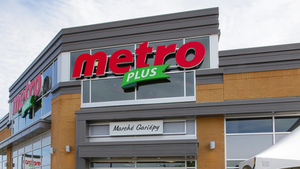WAKEFERN FOOD CALCULATES COMPUTER ORDERING PAYS
HOUSTON -- Wakefern Food Corp., Elizabeth, N.J., has dramatically cut backroom inventories while increasing same-store sales through an enhanced computer-assisted ordering program.Same-store sales increases ranging from 15% to 25% for several stores can be directly attributed to use of the enhanced ordering system, said Natan Tabak, chief information officer.Tabak noted that one store using the system
March 13, 1995
CHRIS O'LEARY
HOUSTON -- Wakefern Food Corp., Elizabeth, N.J., has dramatically cut backroom inventories while increasing same-store sales through an enhanced computer-assisted ordering program.
Same-store sales increases ranging from 15% to 25% for several stores can be directly attributed to use of the enhanced ordering system, said Natan Tabak, chief information officer.
Tabak noted that one store using the system reduced backroom stock by 60%, the equivalent of 12 grocery pallets containing about 432 cases.
Stores also saw improved category performance. For instance, vegetable merchandise inventories decreased about $10,000, while the category grew slightly as a percentage of total sales.
Tabak, speaking at the Food Marketing Institute's MarkeTechnics conference here, said Wakefern has been using computer-assisted ordering for about 10 years. Now the chain is forging ahead with an upgraded version, which he termed "computer-generated ordering," that relies on far more automation than in the past.
Sixty stores have fully implemented the ordering system and an additional 30 to 40 stores are currently bringing it on line, Tabak told SN in an interview following his presentation.
"Most important, from our perspective, is customer satisfaction," Tabak said. "If we don't save a cent but we satisfy the customer, we've won. If a customer can walk into our store and doesn't need to get a raincheck for some item, we're happy."
The process begins at the checkout, Tabak said. Each product is scanned in at the point of sale, and the data is transferred at night to an in-store processor.
"It sounds easy but it's not," Tabak said. "In one of our store
systems we can move data in 45 seconds, and another takes 45 minutes. In 45 minutes, there's more room for error than any of us can imagine.
The store processor uses the sales data to help calculate the next day's order. "It's not enough to know just what you've sold," Tabak said. "The system has to look at the orders the store is about to receive, because the same morning there is already a truck at the back door."
After the store manager approves the order, it is electronically transmitted to a Wakefern distribution center. But continued success of such a program demands aggressive system controls, Tabak said. Among them:
· Computer files require diligent maintenance so that irregularities like discontinued or damaged items can be factored into the ordering program.
Computer files, which are the backbone of the system, require daily maintenance, Tabak said.
"The system has to compute the forecast for each individual item, and we have to worry about items that were discontinued," Tabak said. "Last year we were introduced to over 20,000 new items, and 19,000 were probably discontinued by now."
· On-time product delivery schedules must be strictly adhered to, or the entire process can be derailed.
"A [computer-generated] order anticipates the sales of tomorrow and wants the order in the store tomorrow," he said. "It's useless if the order comes a week later."
· Training of employees, from cashiers to store managers, is essential to maintain scanning integrity and receiving procedures.
"There is an unbelievable amount of training hours involved," he said. "Anyone who tells you anything different, that you can 'wing it' -- forget it. You cannot wing it. "Is CGO expensive? Yes. You have to have hundreds of training hours," Tabak said. Cashiers need to understand the importance of scanning every item; use of the quantity key as a shortcut will result in inaccurate ordering.
Scanning accuracy is absolutely essential, he said, adding that if retailers don't have at least a 98% to 99% scanning accuracy rate, they are better off not attempting computer-generated ordering.
Training also means confronting some reluctance to change. "You're going to have to tell some managers, 'I know you have 20 years' experience, but now you're going to have to do it differently," Tabak said.
The payoff of computer-generated ordering, he added, more than offsets any inconveniences of setting up such a program.
Wakefern now assigns employees to more productive tasks since the system began, he said. "We are saving time when we let the system order, and we find we then have time for other activities that are much more important for us."
About the Author
You May Also Like




